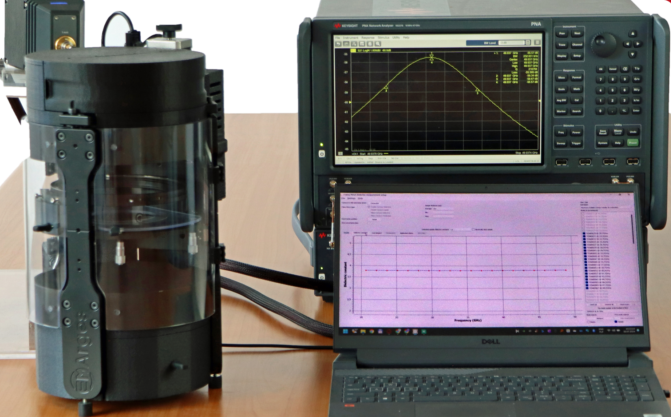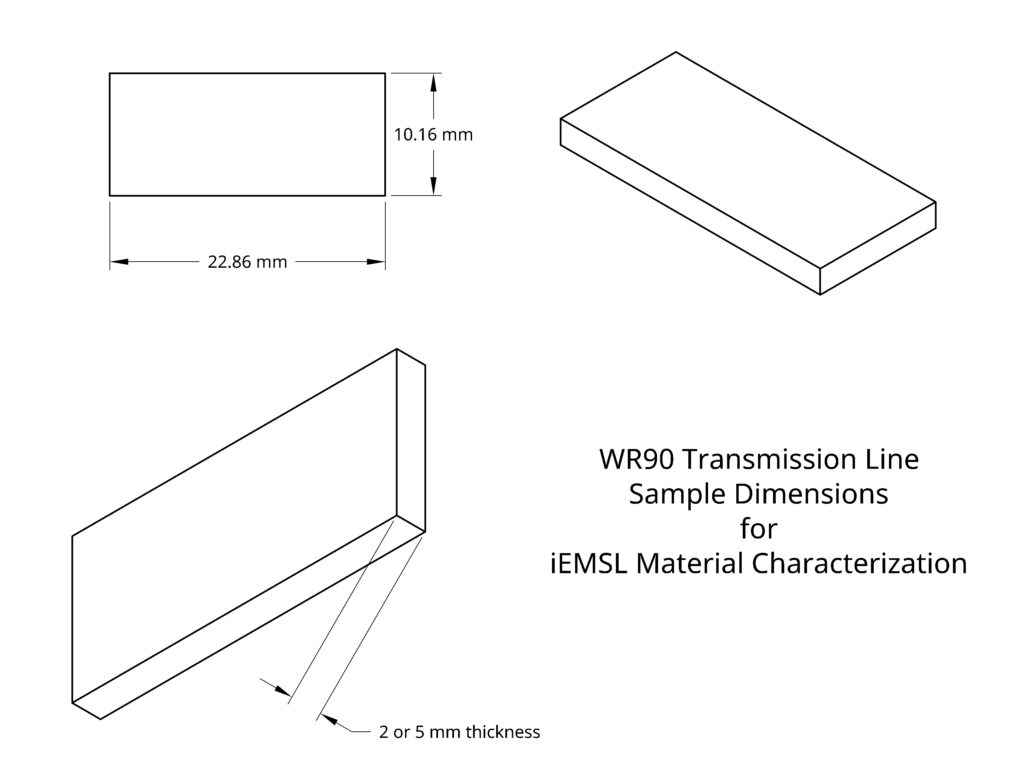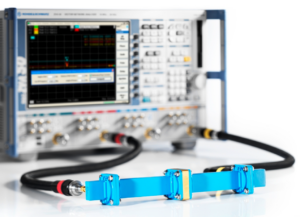
Electromagnetic Material Characterization Measurement Services
Test the performance of your MUTs in the iEMSL’s state-of-the-art facility.
The Intelligent Electromagnetic Sensor Laboratories (iEMSL) at Texas A&M University, in collaboration with QWED and Warsaw University of Technology, offers specialized material characterization services. We precisely evaluate how materials interact with electromagnetic fields, providing critical data on their properties to support researchers and industries in advanced design and innovation.
Our Core Capabilities & Instrumentation
We precisely measure fundamental electromagnetic properties of materials, including complex permittivity (ϵ=ϵ′−jϵ′′), which comprises the dielectric constant (dk or ϵr′) and the loss tangent (df or tanδ=ϵ′′/ϵ′), as well as shielding effectiveness. Our measurements utilize advanced Keysight PNA-X (up to 26.5 GHz) and Rohde & Schwarz ZVA (up to 67 GHz) vector network analyzers. By combining industry-leading commercial software with our specialized tools, we ensure precise control and extraction of critical material parameters, tailored to your specific requirements.
Measurement Systems Overview
Our services leverage three primary measurement systems, each optimized for specific material types and frequency ranges. Refer to the table below for a quick comparison:
| Measurement System | Frequency Range | Applications | Sample Requirements | Price per Sample |
|---|---|---|---|---|
| Transmission Line WR-90 Waveguide |
8.2 – 12.4 GHz (X-band) |
Shielding Effectiveness (SE) testing Permittivity of high-loss solids EMC compliance for materials |
Length: 22.86 mm Width: 10.16 mm Thickness: 2 or 5 mm |
$250 first + $100 additional TAMU: $100 First + $25 additional |
| Split Post Dielectric Resonator (SPDR) |
10 GHz | Complex permittivity of dielectric sheets Supports IPC 2.5.5.15 & IEC 61189-2-721 standards Characterizes film-on-substrate coatings by tracking tiny shifts in resonance frequency and Q-factor |
Length: > 45 mm Width: 45 – 90 mm Thickness: < 0.95mm |
Room Temperature: $250 first + $100 additional TAMU: $100 First + $25 additional Up to 100°C: $300/sample TAMU: $150/sample |
| Fabry-Perot Open Resonator (FPOR) |
10.2 – 52.2 GHz or 20 – 52.2 GHz |
Wideband complex permittivity In-plane anisotropy of dielectric sheets, polymers, glasses |
Diameter: 50 – 110 mm Thickness: 1 µm – 3 mm |
10.2 – 52.2 GHz: $450 first + $250 additional TAMU: $250 first + $100 additional 20 – 52.2 GHz: $350 first + $150 additional TAMU: $150 first + $50 additional |
View our example measurements.
More details are provided below:
► WR-90 Waveguide Transmission Line (8.2 -12.4 GHz)
For solid, homogenous materials, the iEMSL can measure the complex permittivity (±5% accuracy) and shielding effectiveness (±1% accuracy) in the 8 – 12GHz (X-band) range. Samples must have rectangular dimensions of 22.86 mm x 10.16 mm, with a thickness of 2 or 5 mm.


The iEMSL utilizes the PNA-X Vector Network Analyzer for S-parameter extraction, the WR-90 waveguide and short plate, calibration to isolate the material, and a Nicholson-Ross-Weir extraction algorithm script to visualize your material’s response. You must provide a solid material matching the provided waveguide dimensions and a WR-90 spacer to tightly house the sample.
The measurement accuracy of Dielectric constant is ±5% and for Shielding effectiveness is ±1%.
► Split Post Dielectric Resonator (10 GHz) – in collaboration with QWED
The split post dielectric resonator (SPDR) can measure the dielectric constant and loss tangent of dielectric sheets. Samples must have a diameter between 45 mm and 90 mm and a thickness between 15 µm and 0.95 mm.

Utilizing the PNA-X Vector Network Analyzer, the iEMSL offers single frequency measurements of the dielectric constant at 10GHz with the SPDR. Supporting the IPC 2.5.5.15 and IEC 61189-2-721 standards, this resonator based method is ideal for accurate characterization of thin dielectrics.
The measurement accuracy for Dielectric constant: is Δε/ε = ±(0.0015 + Δh/h) and for Loss tangent: Δtanδ = ±2×10⁻⁵ or ±0.03*tanδ (higher of the two). For more information, visit QWED.
► Fabry-Perot Open Resonator (10.2 – 52.2 GHz) – in collaboration with QWED
iEMSL utilizes the ZVA67 Vector Network Analyzer along with the FPOR to offer very high precision for dielectric constant (±0.25%) and loss tangent (±2%) measurements over the wide frequency band of 10 – 50GHz, the FPOR is ideal for a wide variety of measurements and precision needs. This also enables In-plane anisotropy testing and climatic compensation is always enabled. Samples should have a diameter between 75 mm and 110 mm and a thickness between 1 µm and 3 mm.

The measurement accuracy for Dielectric constant: is ±0.25% (for Dk = 1 – 15) and for Loss tangent: tanδ < 10, ±2% (for Df >5×10⁻⁶).
Thickness & Dk Limitations
This graph illustrates the relationship between a material’s dielectric constant (Dk) and its thickness, defining the measurable and unmeasurable regions for a specific testing method. The green and tan areas represent valid combinations that can be measured, while the two “prohibited zones” indicate combinations that cannot be reliably tested. For Dk < 3, the maximum thickness is 3mm.
- Green Zone: This is the ideal measurement range, where combinations of Dk and thickness allow for highly reliable and precise results with a low measurement uncertainty of ±0.25%.
- Tan Zone: This area indicates that a measurement can still be obtained, but with a greater uncertainty of ±0.5%.
- Prohibited Zones: These zones represent invalid combinations of Dk and thickness where no reliable data can be acquired.

Thickness & Df Limitations
Limitations are imposed on the maximum loss tangent with respect to thickness. If the material has a very high loss, the resonator curve may not be distinguishable from noise.

Dimension Requirements
To achieve the full frequency range down to 10.2 GHz, the target sample size should be between 101 mm and 109 mm. For rectangular samples, one dimension can be up to 150 mm, but the other must be less than 110 mm.

Custom Solutions
Beyond our standard services, we provide custom solutions tailored to unique material characterization needs. Reach out, and we’ll strive to accommodate your request with our flexible, innovative approach.
Ready to Measure?
iEMSL is equipped to support your material electrical testing needs. Click below to submit a request to have your material evaluated in our state-of-the-art facilities.
